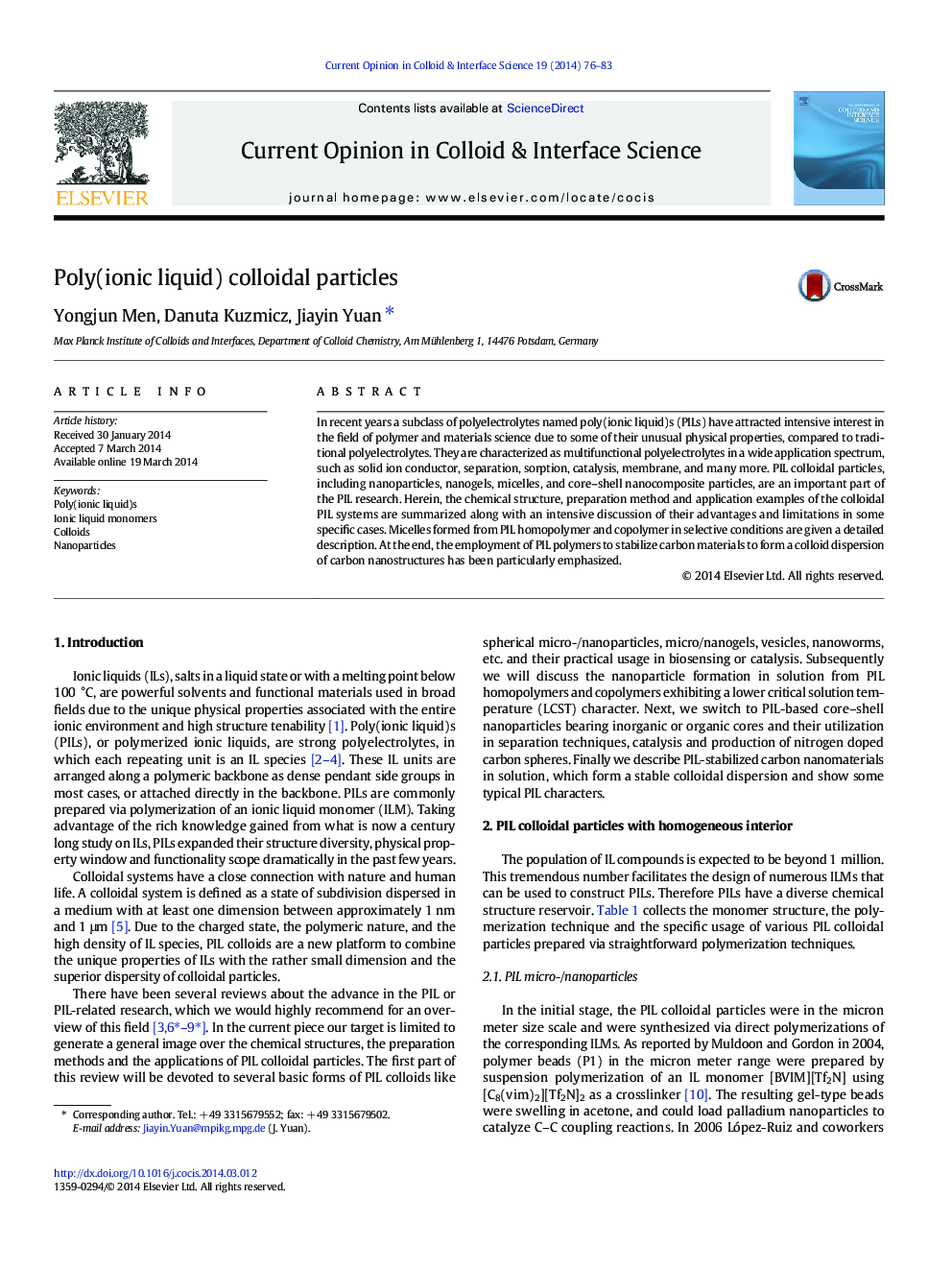| کد مقاله | کد نشریه | سال انتشار | مقاله انگلیسی | نسخه تمام متن |
|---|---|---|---|---|
| 603340 | 880208 | 2014 | 8 صفحه PDF | دانلود رایگان |

• This article reviews the chemical structure, preparation method and application examples of the PIL colloidal particles.
• Different forms of PIL colloids like spherical micro-/nanoparticles, micro/nanogels, vesicles, and nanoworms are described.
• Various types of particle-forming PIL homo-/copolymers exhibiting a LCST-like character are presented.
• PIL colloidal particles can serve as a stabilizer and a source of carbon materials.
In recent years a subclass of polyelectrolytes named poly(ionic liquid)s (PILs) have attracted intensive interest in the field of polymer and materials science due to some of their unusual physical properties, compared to traditional polyelectrolytes. They are characterized as multifunctional polyelectrolytes in a wide application spectrum, such as solid ion conductor, separation, sorption, catalysis, membrane, and many more. PIL colloidal particles, including nanoparticles, nanogels, micelles, and core–shell nanocomposite particles, are an important part of the PIL research. Herein, the chemical structure, preparation method and application examples of the colloidal PIL systems are summarized along with an intensive discussion of their advantages and limitations in some specific cases. Micelles formed from PIL homopolymer and copolymer in selective conditions are given a detailed description. At the end, the employment of PIL polymers to stabilize carbon materials to form a colloid dispersion of carbon nanostructures has been particularly emphasized.
Figure optionsDownload high-quality image (164 K)Download as PowerPoint slide
Journal: Current Opinion in Colloid & Interface Science - Volume 19, Issue 2, April 2014, Pages 76–83